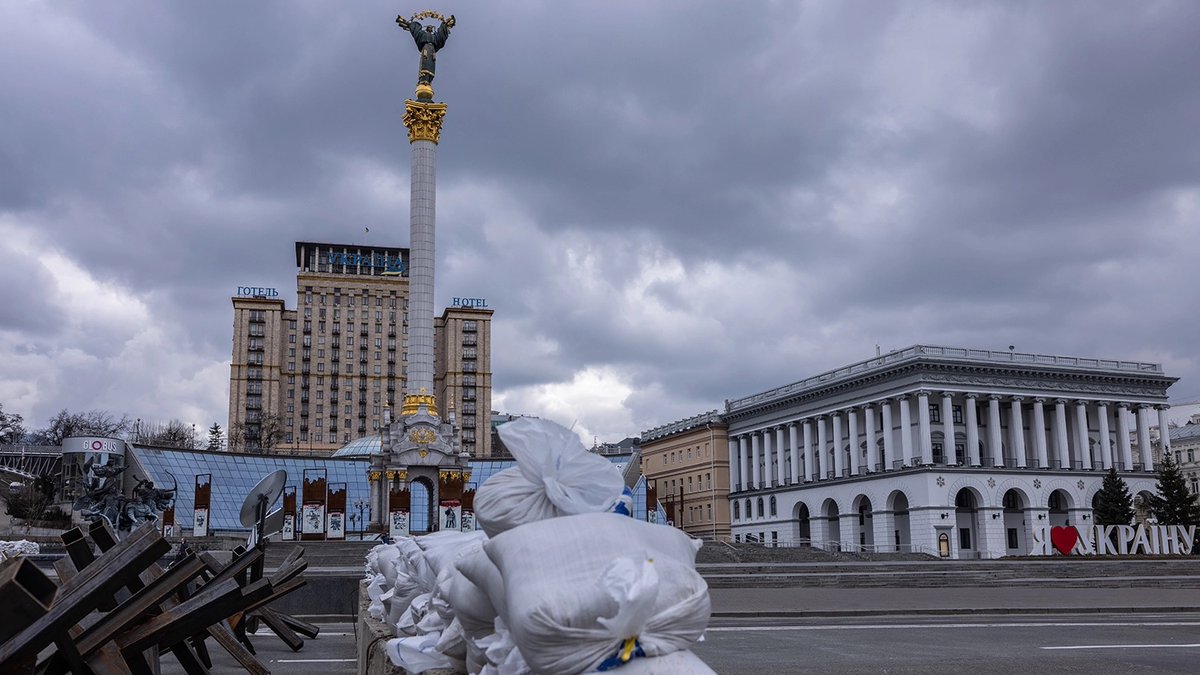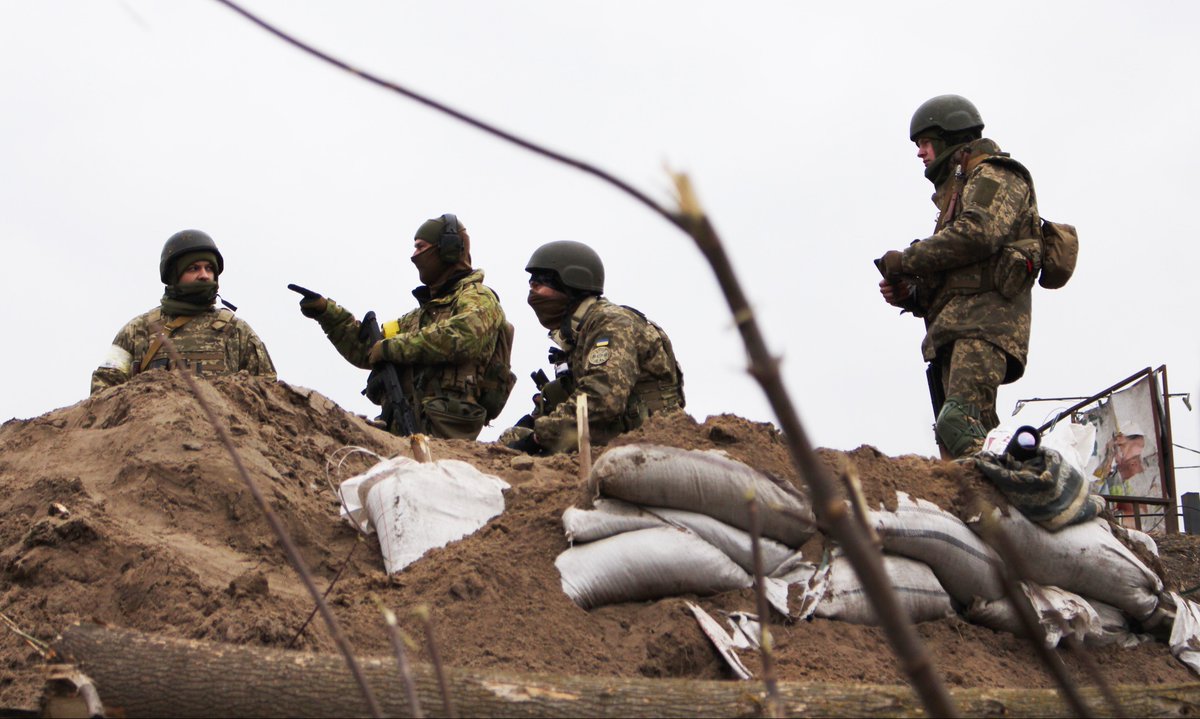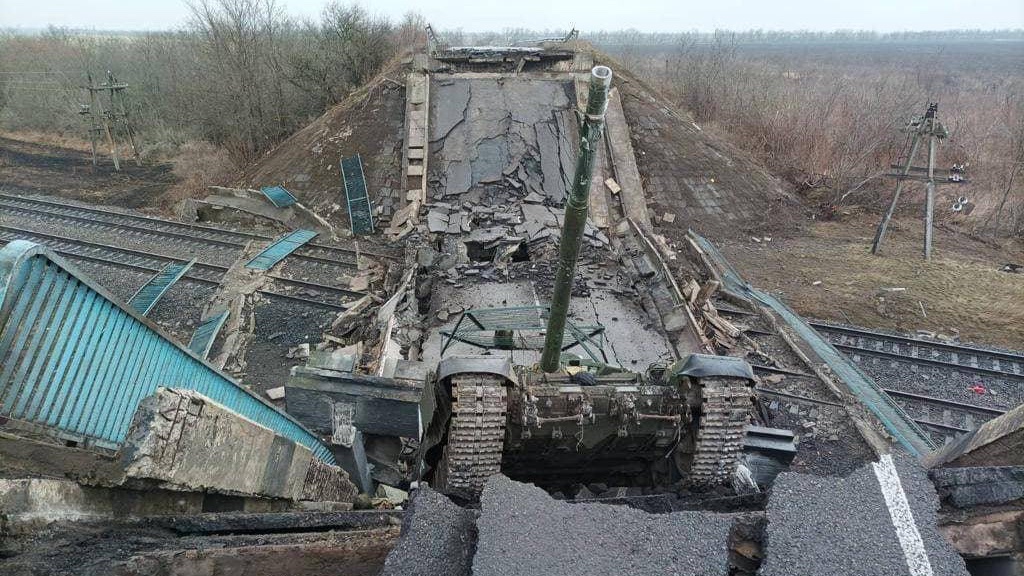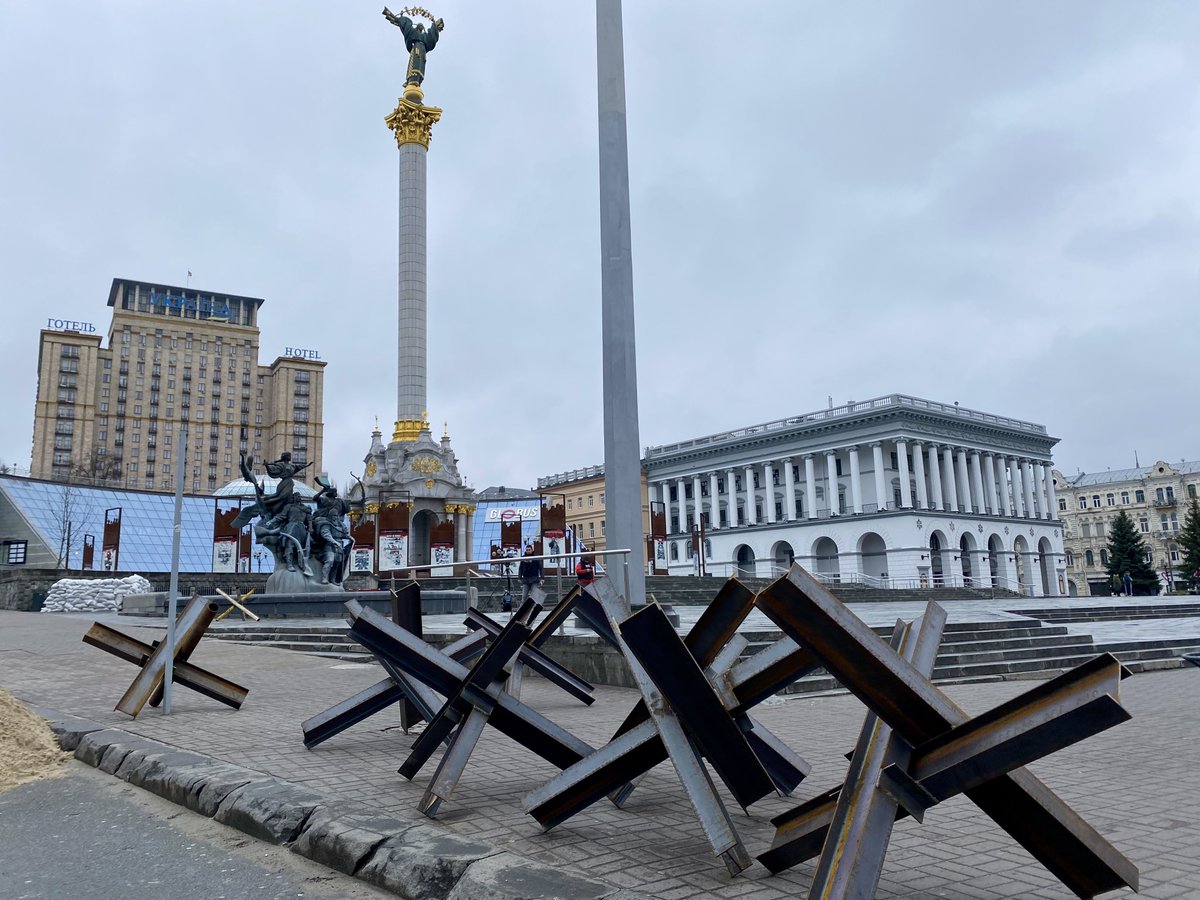
Eleven days since the Russian invasion of Ukraine began. In the past 24 hours, we have seen limited Russian progress in the north and east, and another broken Russian ‘ceasefire’. Today - the war in the south, and why it matters. 1/25 
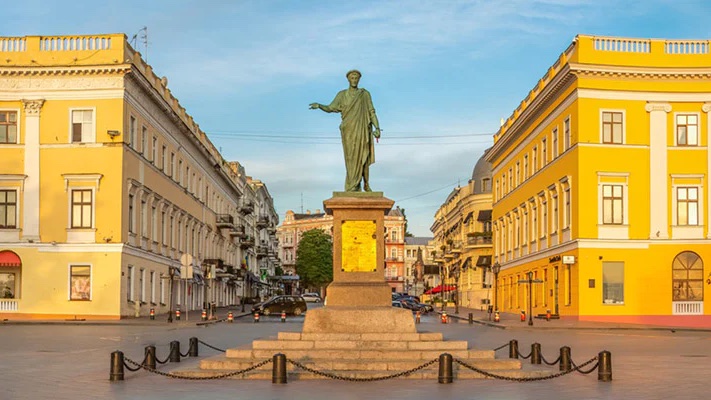
2/25 As always, a shout out to those reporting on the Russian invasion. This includes @KofmanMichael @maxseddon @IAPonomarenko @RALee85 @shashj @DanLamothe @ikhurshudyan @IanPannell @defenceHQ @thestudyofwar @OrlaGuerin @siobahn_ogrady @lawdavf among others. Please follow them.
3/25 The southern theatre of the war is a vital element of the overall Russian campaign design for Ukraine. The south contains Ukraine’s 13 seaports, which in 2021 exported over 150 million tons of cargo. This represents 60% of exports & 50% of imports for Ukraine.
4/25 The city of Odessa is Ukraine’s third largest city, and a major transportation and export hub. Possession of this city, and the entire Ukrainian southern coastline, gives Russia a land bridge to Crimea while strangling the Ukrainian economy. 

5/25 Odessa is also a significant port for the importing Western aid. Russian capture of this port would be a psychological and political victory for the Russians. It would be a major strategic logistical problem for Ukraine & would cut of a large source of government revenue.
6/25 Pre-war analysis identified the south as one of the likely main theatres of any Russian invasion of #Ukraine for these reasons. Below is a projection from @CSIS in January this year. 
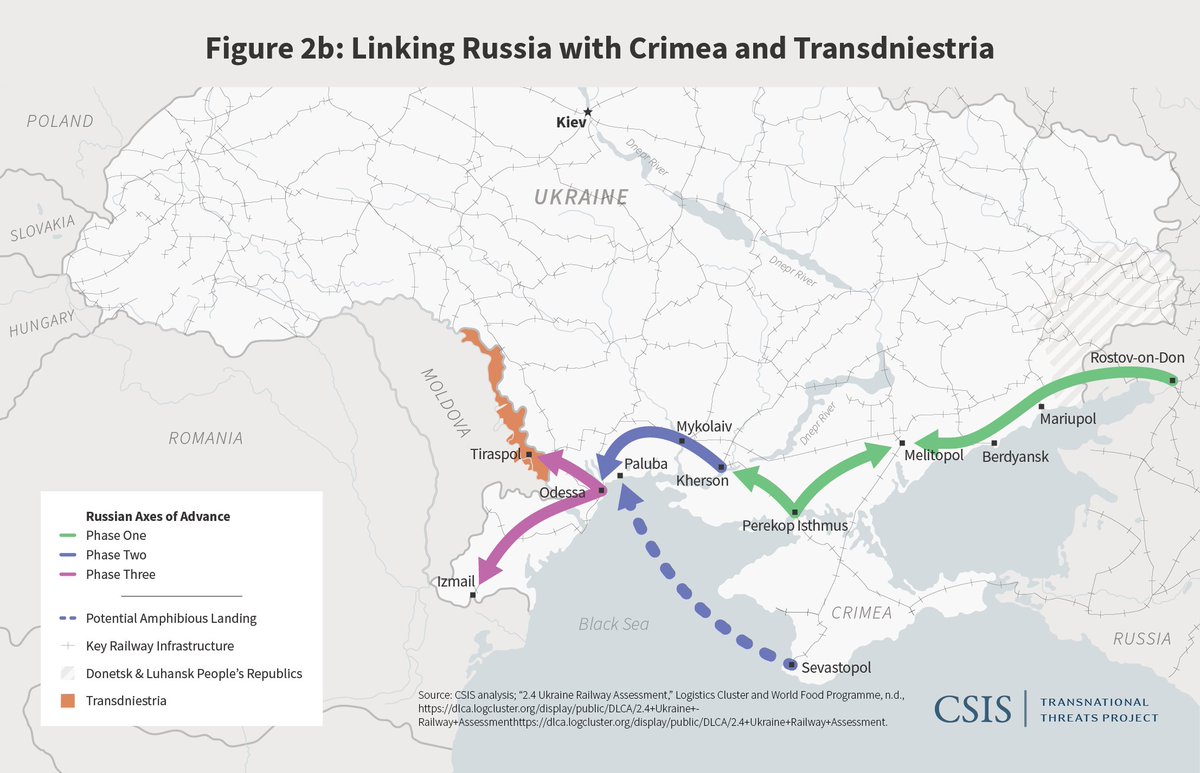
7/25 It is therefore important to understand this theatre. And while the war in the north and east has settled into a slow moving and grinding war of attrition, the war in the south has been the location of more operational success for the invading Russian forces.
8/25 Russian units commenced advancing out of their assembly areas in Crimea and the Donetsk region early during the invasion. While the Ukrainians fought well, there appears to have been a significant overmatch of Russian ground forces in the south. Map - @JominiW 
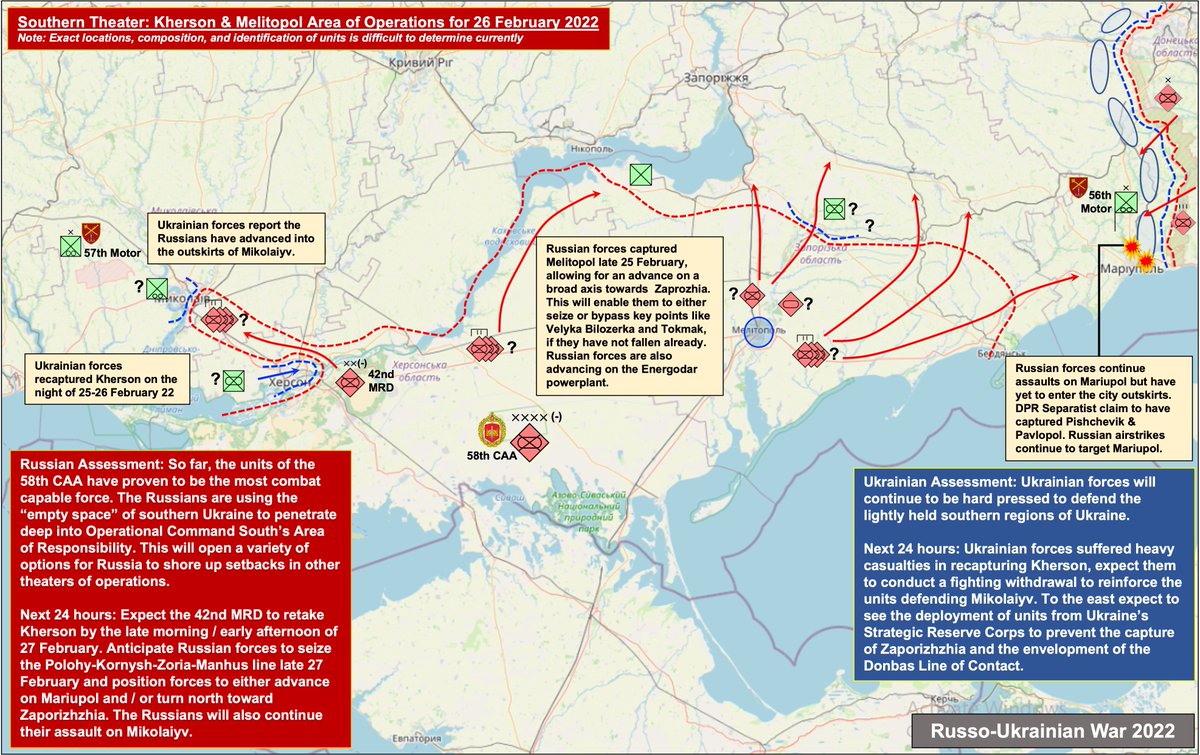
9/25 Very early, it was clear the Ukrainians had a problem in the south. As multiple sources described, from 25-26 February, Russian units from Crimea and Donetsk were attempting to link up on the northern shore of the Azov Sea.
10/25 Even the Ukrainian President acknowledged the challenges in the south in the early days of the war. These fears have been realised over the last several days. 
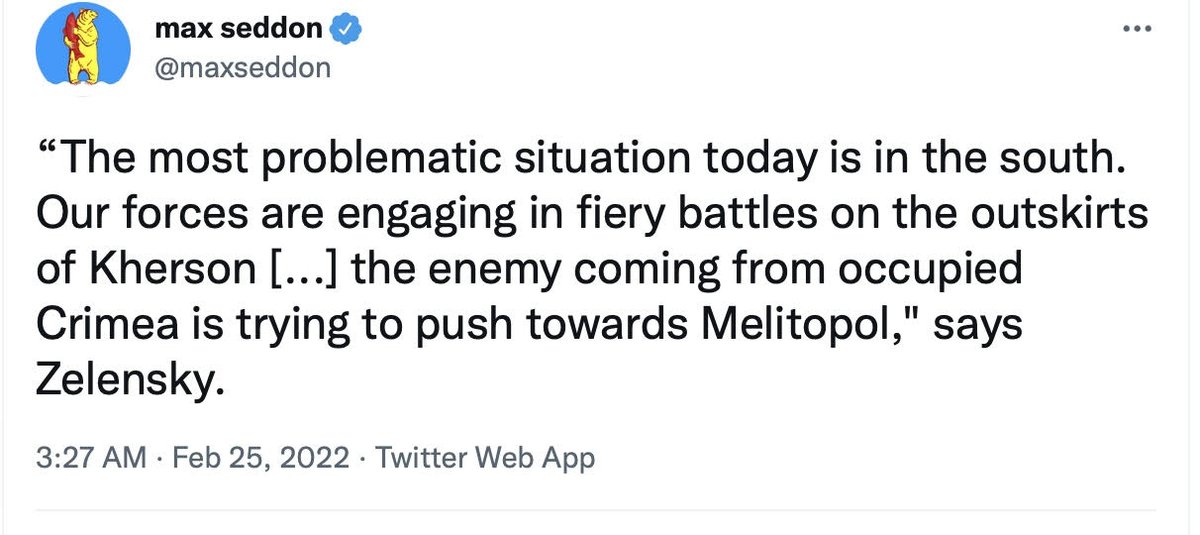
11/25 Most recent updates from the Ukrainian Ministry of Defence, and other open sources, describe how Russia has secured a continuous land bridge from Crimea back to Russia. While Mariupol remains contested, it is unlikely to hold out for much longer. Map - @JominiW 
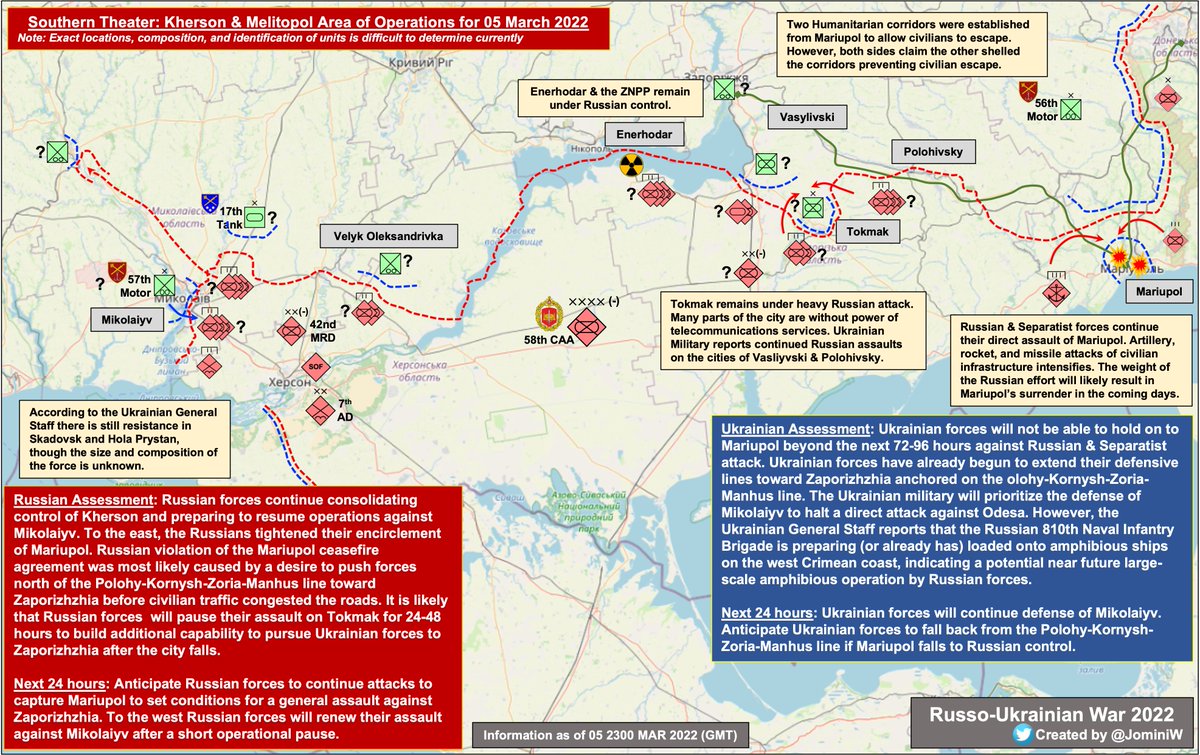
12/25 Why have the Russians in the south generally been more successful than those in the northeast and north? There are several reasons for this.
13/25 First, defence of Kyiv is the strategic main effort for Ukraine. It is their capital, and has significant political, logistic, and cultural value. It is also the centre of an influence campaign with global reach. Ukrainians focussed most of their forces in the north & NE.
14/25 Second, the Russians were able to concentrate a significant amount of combat power in the south before the war. This is in the order of around 15 BTGs in the Rostov-Krasnodar area in the east and another ~15 BTGs in Crimea.
15/25 Third, the Russian forces that surged out of the Rostov-Krasnodar area, and Crimea, did so from established Russian bases that are good logistic hubs. Those that advanced out of Belarus in particular did not. This made logistic support in the south less complex.
16/25 Fourth, the Russians have preserved an amphibious landing capability. Notwithstanding the complexity of these operations, the Ukrainians have also had to watch the sea for threats as well as the land. 
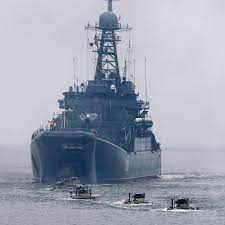
17/25 Finally, and this is purely speculation, the #leadership & campaign planning in the south appears to be superior to the north. While often advancing on diverging axes, the southern theatre has largely continued without the long pauses seen in the north and northeast.
18/25 What does this all mean for subsequent Russian operations? First, Russian control of the entire southern coastline provides a foundation to encircle Ukrainian forces in the east of the country, particularly around Donbas and the line of contact.
19/25 With a large Ukrainian force in the east, at some point a decision will need to be made on ceding this area to preserve Ukrainian combat power.
20/25 Capturing the south provides a launch pad for any Russian break out to surround and seize Dnipro. This city has high strategic value to the Russians. Its possession supports provides a significant logistic and transport hub for the southeast.
21/25 Possession of Dnipro would also support the Russian capture of all Ukrainian territory east of the Dnieper River. This, and the capture of Kyiv, may be a key Russian decision point in offering terms to the Ukrainian leadership.
22/25 Finally, the Russians are now postured to advance on Odessa. This is a significant operational objective in the south. The Russian 810th Naval Infantry Brigade is reported to be loaded on amphibious ships ready for such landings.
23/25 This from @covertshores & @detresfa_ is a useful examination of how and where an amphibious operation might play out. An amphibious operation would complement overland advances by ground forces from Mykolayiv and Voznesensk. 

24/25 If Russia captures Odessa, it may free up combat power for other missions. This could include operations focussed on the western borders to interdict the crossing of western aid. Or the Russians may form a theatre reserve to rotate units and exploit strategic opportunities.
25/25 That concludes update 11. While much of the attention of the West is focussed on northern and eastern theatres of the war, the Russians are achieving greater success in the south. This will have an impact on any war termination agreement. End. Image - @Ukraine 
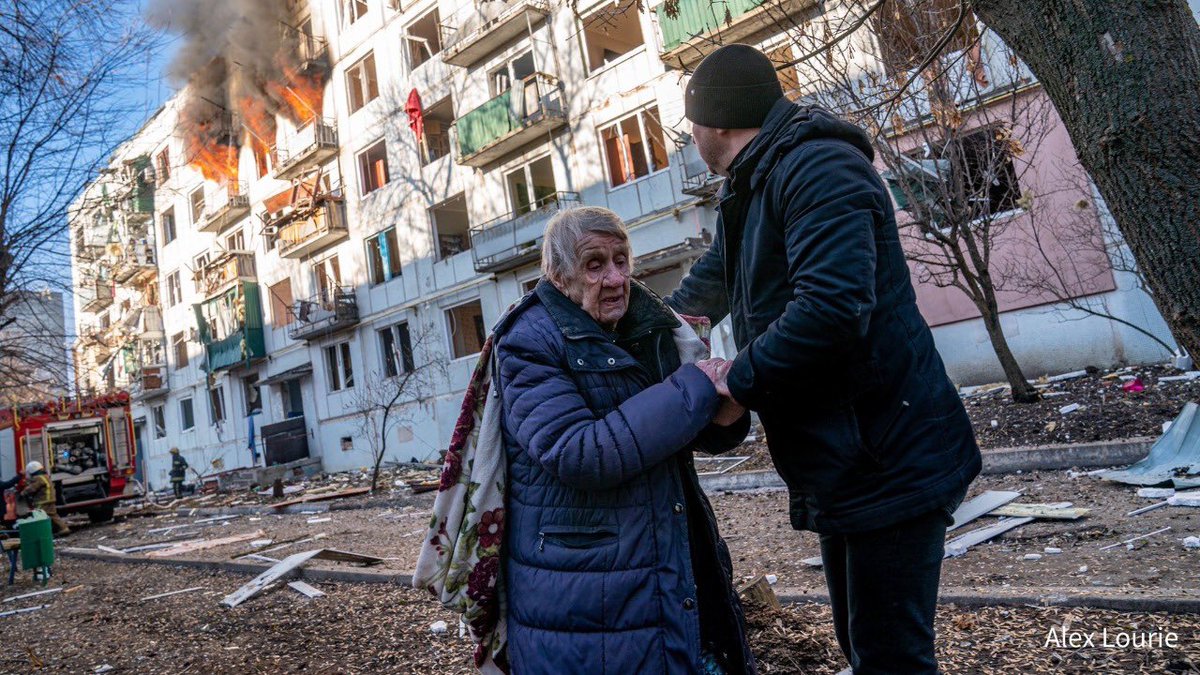
• • •
Missing some Tweet in this thread? You can try to
force a refresh


